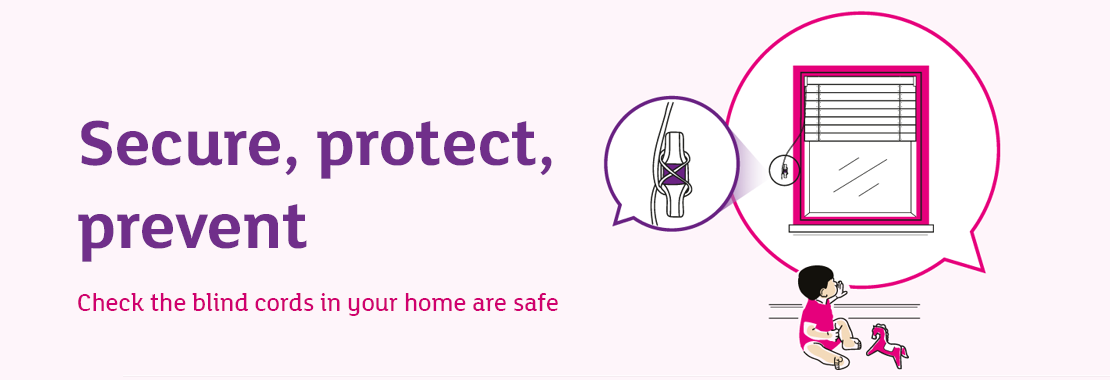
Blind cord and chain safety
Do you have any blinds in your home?
According to our recent survey*, 80% of UK homes have blinds, however 70% of respondents said they had never received any advice on blind cord safety. Worryingly, 62% of parents with children under five said that they hadn’t received any guidance on installing and using blind cords and chains safely.
We’re really concerned by this gap in people’s knowledge.
Why? Because blind cords and chains can be deadly. Tragically, nine children died from blind cord strangulation between April 2019 and March 2022** and RoSPA is aware of at least 33 UK deaths in the preceding 20 years.
The statistics are sobering, particularly for parents with young children. That’s why we’ve worked closely with the British Blind and Shutters Association and other partners to raise awareness of blind cord safety.
And there’s good news. Since 2014, changes to standards have made blinds safer. If you buy a new blind with a looped cord or chain today, it will have a safety device already installed or included for you to install yourself. But that doesn’t solve the huge problem of the millions of blinds installed before 2014. Which may not have any life-saving safety features – so you need to act . If these blinds cannot be made safe by the addition of safety device(s) they should be replaced.
Time to take action
We know that life’s busy, but it doesn’t take long to walk around your home to check your blinds are safe. Remember, if you have blinds installed in your home, you should check them to make sure that there are no looped cords or chains that a child can put around their neck. We know that blind cords and chains can kill. In just a few seconds a toddler can lose consciousness and they can die within just two to three minutes. So, it’s time for action – especially if you’ve got young children.
If you live in rented accommodation landlords have a duty of care to their tenants, including keeping their rented properties safe and free from health hazards. Landlords therefore have a responsibility to ensure all blinds installed anywhere in their properties which contain cords or chains (which may be hazardous) are safe. For more information, click here.
Traveling soon? It is important to undertake a home safety check at any accommodation you may be staying at. If you arrive at a holiday home and there are no blind cord or chain safety devices, report this at the earliest opportunity to the owner, managing company, or the site through which the venue was booked. Until the issue is resolved, move any cords or chains so they are inaccessible to babies and young children. This should be done during each and every operation of the blinds. Additionally, move any cots or beds away from window blinds and any objects a child could climb on. More advice on blind cod and chain safety when travelling can be found here.
Blind cord and chain safety: how to keep your family safe
Whether you already have blinds in or your home, or you're looking to install some, here is our top advice on how to keep your family safe from the dangers of blind cords and chains.
✓ Never fit a blind with a looped cord or chain in your child’s bedroom.
✓ Position furniture away from windows.
✓ Check the blind cords and chains in every room your child spends time in, not just their bedroom. Use tidies, tensioners or cleats to make cords and chains safe.
✓ Cords should be secured around cleats in a figure of eight. Install cleats at least 1.5 metres from the ground so that they are out of the reach of curious little hands.
✓ Don’t cut cords or chains – this won’t remove the risk and may damage your blind.
✓ If you can, replace blinds made before 2014 with new ones that meet current safety standards. Buy your blind from a trusted retailer.
✓ If you’re buying a new blind, consider choosing a cordless model.
✓ Position your child’s cot or bed away from the window.
✓ It sounds obvious but we have to say it… read the instructions! Follow the manufacturer’s guidance carefully. Be sure to install any safety devices included with your new blind.
✓ Please remember that corded curtain tracks can pose the same risks as blinds and you should also consider these when considering cord and chain safety.
Remember: If there’s an emergency call 999
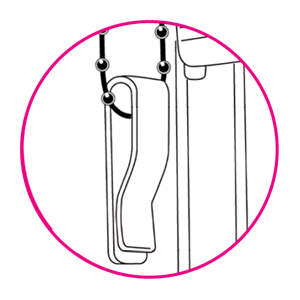
Example of a blind tidy/tensioner.
.png?width=300&height=300)
Example a cord secured around a cleat in a figure of eight.
Help us save lives and spread the word about blind cord safety
Tell your family about the risks of
blind cords
Make sure everyone – grandparents, aunts, uncles - knows what to look out for to keep children safe.
Talk to your landlord
If you’re renting, your landlord should take responsibility for making sure any blinds in the property are safe.
Raise it with your employer
Find out if blind cord risks are covered in your workplace’s health and safety policy.
Additonal information and resources
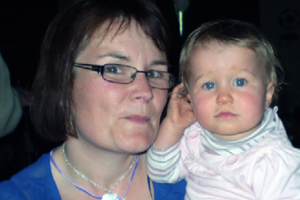
Leah's story
Joy and Andy Edwards thought they had taken every precaution to keep their four children, including 17-month-old twins Leah and Luis, safe in their home.
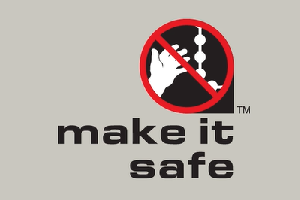
Make it Safe Campaign
Make it Safe is a campaign by the British Blind and Shutter Association (BBSA) and provides technical details about particular types of blinds, regulations for installers, and guidance for landlords.
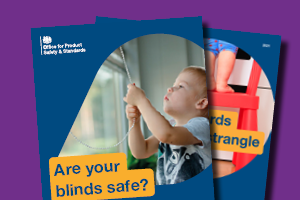
Blind Cord Resource Pack
Leaflets, posters and social media assets to raise awareness of blind cord safety, produced by the Office for Product Safety & Standards.
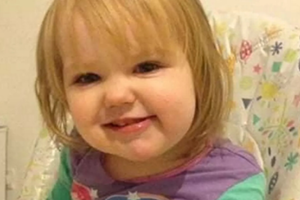
Macy's story
Oldham mum, Karoline Craig, lost her daughter Macy in a blind cord accident.
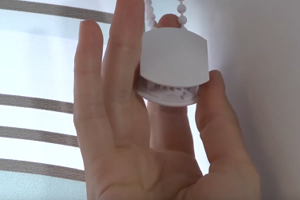
Making your blinds safe
This video from BBSA explains how to make existing blinds safer by adding devices to control cords and chains or hold them taut.
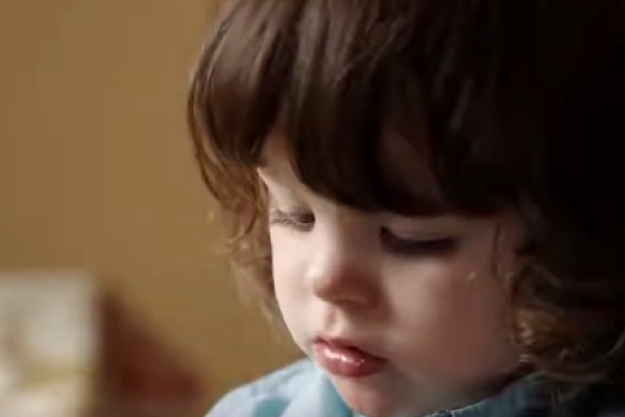
The danger of blind cords
This hard-hitting video from Northern Ireland's Public Health Agency shows how quickly a blind cord accident can happen.
*Based on our 2023 survey with YouGov of 2,081 people in the UK
**National Child Mortality Database Deaths of children and young people due to traumatic incidents (ncmd.info)